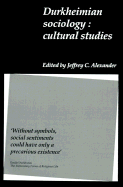Book contents
- Frontmatter
- Contents
- List of contributors
- Acknowledgements
- Introduction: Durkheimian sociology and cultural studies today
- Social change and sacralization
- 1 The sacred and the French Revolution
- 2 From Durkheim to Managua: revolutions as religious revivals
- 3 The Liminal fight: mass strikes as ritual and interpretation
- Micro and macro in symbolic context
- Ritualization and public life
- Index
1 - The sacred and the French Revolution
Published online by Cambridge University Press: 05 July 2011
- Frontmatter
- Contents
- List of contributors
- Acknowledgements
- Introduction: Durkheimian sociology and cultural studies today
- Social change and sacralization
- 1 The sacred and the French Revolution
- 2 From Durkheim to Managua: revolutions as religious revivals
- 3 The Liminal fight: mass strikes as ritual and interpretation
- Micro and macro in symbolic context
- Ritualization and public life
- Index
Summary
An idol is a very sacred object and sacredness the highest value ever recognized by man. An idol is often, however, nothing but a block of stone or a piece of wood, things which in themselves have no value.
Emile Durkheim, “Value Judgments and Judgments of Reality,” in Sociology and Philosophy, trans. D. F. Pocock. (Glencoe, III., 1953), p. 86.The metaphysical principles of Locke and Condillac should become popular, and the people should be accustomed to see in a statue only stone and in an image only canvas and colors.
From an article in the Annales patriotiques during year II of the French Revolution, as quoted by E. H. Gombrich, “The Dream of Reason: Symbolism of the French Revolution,” British Journal for Eighteenth-Century Studies 2 (1979): 187–205, p. 190.Emile Durkheim was never indifferent to what he called “the principles of 1789.” He singled out Rousseau and Montesquieu as the forerunners of sociology, but they were also the two chief inspirations for the revolutionaries of the 1790s. Rousseau and Montesquieu initiated the discovery of society's laws of operation; the revolutionaries put these discoveries into practice. It was the task of sociology to reflect on this interaction. The revolutionaries learned from Montesquieu and Rousseau that social relations were based on convention. Because they were conventional – man-made – they could be remade. A people could learn that statues were only stone and that superstitious fanaticism could be given up for a more rational cult (even a Cult of Reason).
- Type
- Chapter
- Information
- Durkheimian SociologyCultural Studies, pp. 25 - 43Publisher: Cambridge University PressPrint publication year: 1988
- 21
- Cited by



